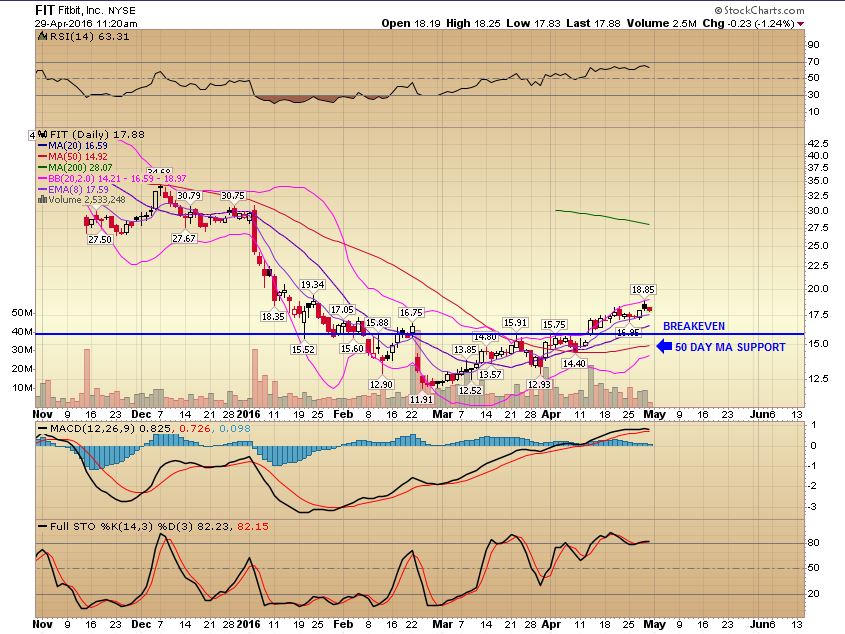Interested in trading for income? In this three-part series for advanced traders, I will share with you the top methods I use to generate monthly returns for my clients. In this post, we’ll discuss covered calls.
What are covered calls?
Covered calls are often the first foray into an investor’s option trading experience. For our example, the structure of a covered call is to buy 100 shares of stock and sell one call against the stock, taking in a credit or “premium” for the option sold. Trading covered calls requires a margin account due to the option component involved. Remember, we don’t trade stocks on margin as that is akin to gambling using credit cards as your backing.
The purpose of the covered call can be twofold:
- You can sell the call to create an additional income stream on a long term position that you don’t want called away.
- Or, you can create a covered call position that is designed to call away at a certain time and date.
(To demystify some terminology: Selling a call against stock is also called a buy-write. Selling an option can also be called “writing” an option against stock.)
In the first instance, option selection is pretty easy. You would select a call that is out of the money and that you can still get decent premium for. Look at the chart of your stock and determine the maximum high you think it will achieve. You can sell a call above that to create income.
Two creative ways to use them
I’ve been selling calls against my long-term holdings in Exxon Mobil (XOM) for years. Each time it technically “lowers” my cost basis, even though it does not show an adjusted lower basis on the screen. You may not get much (as far as percentage gains) when you are trying to cover a stock that you don’t want called away. However, each transaction creates a little more profit. This adds up quickly over the months.
If you do not have a core stock holding, you may consider buying your favorite ETF that pays dividends, like the XLE, and selling upside calls against your holding. In this case, you are getting possible capital appreciation, a dividend, and options premium.
This approach has two benefits: You are able to target specific sectors, and it is unlikely that you will wake up with an entire index down 50% overnight. A disadvantage is that ETF’s offer lower premium as compared to individual stocks. (I discourage using the covered call strategy on double and triple or inverse ETF’s.)
Some would consider writing calls against stock as a defensive measure, and they would be correct. A prudent investor is always seeking ways to protect against adverse price moves. This is one way to do it.
My favorite way to trade them
My favorite way of trading covered calls is to produce a fixed income by a certain date and time. I have a “stable” of stocks that I am very familiar with, and I use them to sell calls against. In fact, I use a covered call worksheet that enables me to predetermine my downside risk, targeted gains if called, and annualized return.
My goal in the trade setup is to find a stock that will give me at least a 7% return if called with at least 10% downside protection. Its chart must have numbers close to a major moving average (which would act as a support in case of adverse market conditions).
The sweet spot in premium for covered calls are generally those trading between $15-$60, as they give a mid-size portfolio the ability to hold enough shares to make a difference in the profit and loss column without taking on too much risk.
As always we start with the chart. For this exercise I chose FitBit (FIT) to structure my covered call. Let’s put the math on the chart:
FIT:
Price per share @ entry: $ 18.03
Option Expiration Date: August 19, 2016
Option Strike: $19.00
Premium (price rec’d for covered call): $2.25
Targeted Gain Per Share: $2.25- (18.03-19.00) = $3.22
Breakeven: (18.03-2.25) = $15.78
Now look at the chart:
Entering this trade puts you in close proximity of support, which is the 50 day moving average and the bottom Bollinger band. Remember, the bands contain 95% of all price action so it is unlikely that this stock would deviate out of the bands and stay there. So, we have our targeted gain per share of $3.22 per call or $322.00 per contract. Your downside protection at entry is price per share/premium rec’d for call ($2.25/$18.03) = 12.5%, which fits within our criteria. The maximum gain ($19.00-$18.03)+$2.25/$18.03 = 17.9% also fits within our criteria, so it is a good candidate for our covered call portfolio.
Patience is required
The final step in the covered call purchase after entry is patience. You sit with the trade and do not tinker with it, only monitoring the chart to ensure it does not go below the breakeven stock price. Patience is key here. Let the stock do its work ,and if it calls away, be happy with your gains and look to write it again. If it does not call away, you simply sell another call against it and repeat the process.
I’ve given the example here of entering the trade as a complete covered call. You may alternately enter a stock at a support level, wait for a rise in the stock, and then sell calls against your stock, as you may be able to get a higher premium for your calls that way.
The article was updated on May 11, 2023
Copyright: lianna2013 / 123RF Stock Photo





















